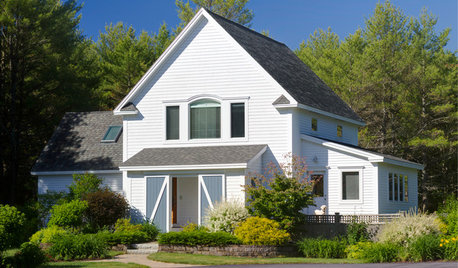Reality check: the market today
12 years ago
Related Stories

HOME TECHWould You Use Virtual Reality to Renovate Your Home?
Architecture can be confusing, but immersion in a computer-generated 3D world soon may help
Full Story
GREEN BUILDINGGreen Grows Up: The Many Faces of Today's LEED Homes
While LEED-certified homes have some common characteristics, the rest is up to your imagination
Full Story
DECORATING GUIDESPaper Chase: Wallpaper Through the Ages to Today
Get on a decorating roll with a wall covering that's been around for centuries but comes in more exciting designs than ever
Full Story
DECLUTTERING10 Types of Clutter to Toss Today
Clear the decks and give the heave-ho to these unneeded items
Full Story
DECORATING GUIDESAnthony Baratta's Picks from Las Vegas Market 2012
In the designer's sights now: Baroque fantasy bed, Sputnik light, inspiring mirrors, retro accessories, the ultimate man chair and more
Full Story
MOVINGTips for Winning a Bidding War in a Hot Home Market
Cash isn’t always king in a bidding war. Get the home you want without blowing your budget, using these Realtor-tested strategies
Full Story
VINTAGE STYLEFlea Market Find: Vintage Signs
Get the skinny on finding a vintage sign just right for your space
Full Story
ARCHITECTUREDesign Practice: The Basics of Marketing Your Business
Pro to pro: Attract clients and get paying work by drawing attention to your brand in the right places
Full Story
KITCHEN CABINETSGet the Look of Wood Cabinets for Less
No need to snub plastic laminate as wood’s inferior cousin. Today’s options are stylish and durable — not to mention money saving
Full Story
SELLING YOUR HOUSE7 Must-Dos on the Day You Show Your House
Don’t risk losing buyers because of little things you overlook. Check these off your list before you open the front door
Full Story





jacqueline9CA
lavender_lass
Related Discussions
A Reality Check on my Roses
Q
I might need a reality check . . .
Q
reality check on HVAC replacement quote, please?
Q
Reality Check...what would you do?
Q
jacqueline9CA
nastarana
TNY78
jerijen
nastarana
oath5
roseseek
mad_gallica (z5 Eastern NY)
erasmus_gw
lavender_lass
subk3
aimeekitty
rosefolly
roseseek
henry_kuska
rinaldo
melissa_thefarm
jerijen
henry_kuska
blendguy
michaelg
subk3
roseseek
thorngrower sw. ont. z5
henry_kuska
subk3
jerijen
roseseek
jerijen
henry_kuska
roseseek
spiderlily7
anntn6bOriginal Author
rosefolly
jerijen
buford
melissa_thefarm
Kippy
roseseek
seil zone 6b MI
User
anntn6bOriginal Author
rinaldo
roseseek
rosefolly
henry_kuska
seil zone 6b MI
iowa_jade